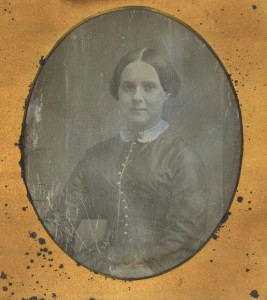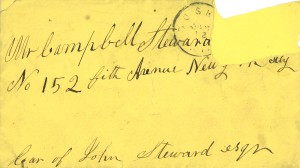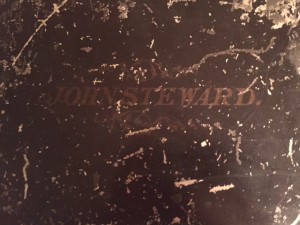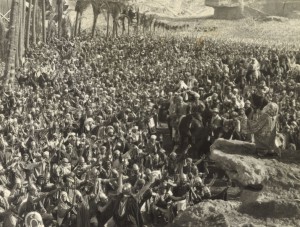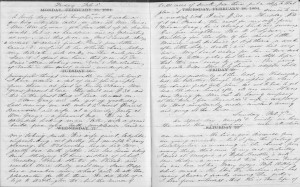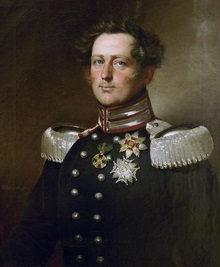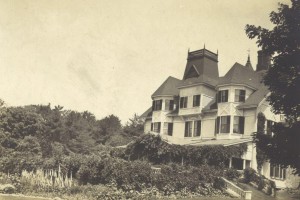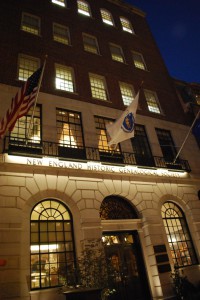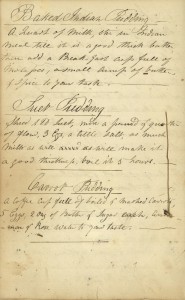
A surprising find in my box of Steward family papers is a combination cookbook–book of home remedies. It is a surprise not as a document – the R. Stanton Avery Special Collections at NEHGS holds many such hybrids – but as a lone example of something from my paternal grandmother’s family in a collection of Steward, White, and Beeckman papers.
To be specific, the cookbook section’s front end paper reads The Misses Beekman. My grandmother was named for her maternal great-great-grandmother, Anne Beekman (1784–1842), who married John Finlay of Montreal in 1809, and the Misses Beekman were Mrs. Finlay’s unmarried sisters, Aletta Beekman (1787–1851) and Cornelia Beekman (1790–1826).[1] Continue reading A Beekman family cookbook

